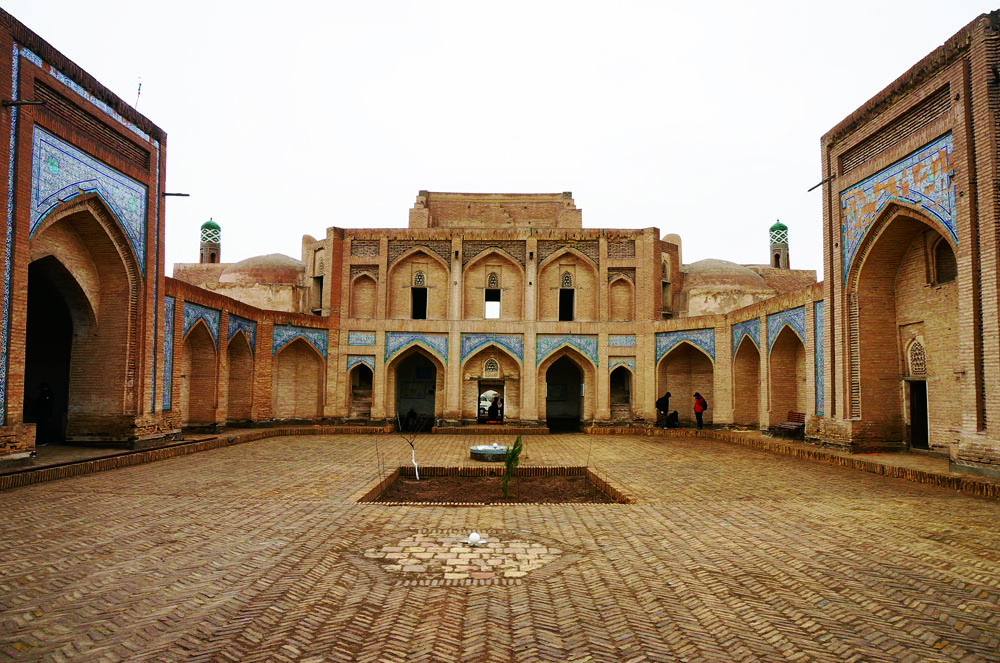Restoring Uzbekistan's Cultural Legacy
By Ma Liwenbo
[Uzbekistan] Hamidjon Atabayevich Babayev & [Uzbekistan] Abdulla Boltaboyevich Yusupov
"I'd give a bag of gold to visit Khiva,"
goes a Central Asian saying. It is an expression of admiration for the exquisite beauty of the ancient city of Khiva.
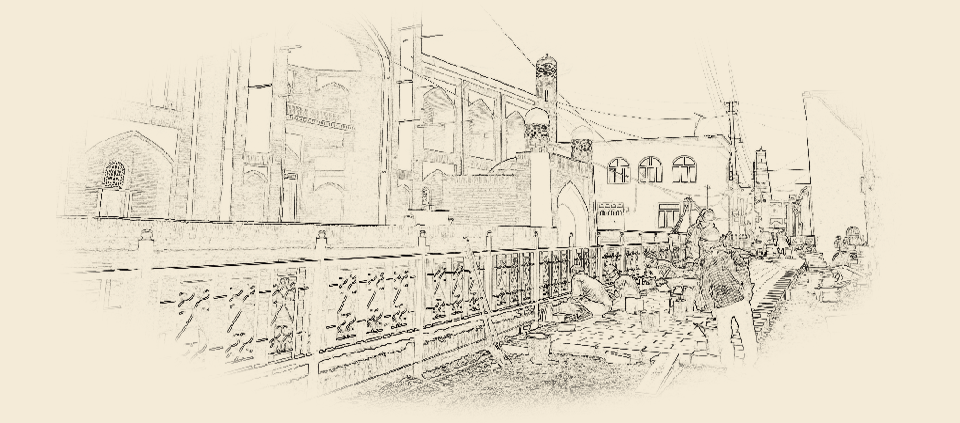
Located in the Khwarazm Region of Uzbekistan, Khiva was built in the 10th century, the heyday of the Khwarazmian Dynasty. It is like a unique historical monument, showing the world the civilization and brilliance of the bygone dynasty.
During the days of the ancient Silk Road, the camel caravans plying on the trade route would be heartened by the sight of the lighthouse of Khiva shining at a distance, indicating a welcome halt and shelter ahead. An important node on the Silk Road, the ancient city is like a veteran old man who has experienced the vicissitudes of life. It was the custodian of a prosperity that lasted for thousands of years and bore witness to the integration of Eastern and Western civilizations.
A Bright Pearl Gets Restored
A model of Islamic architecture in Central Asia, Khiva has preserved 8 mosques, 31 madrasahs or religious educational institutions, 14 minarets, 12 mausoleums and 6 palaces. The different kinds of architecture show the styles of different times, with important historical, cultural and artistic value. The legendary and unique style of the ancient city can be seen in films such as Bo Ba Bu, and Orlando.
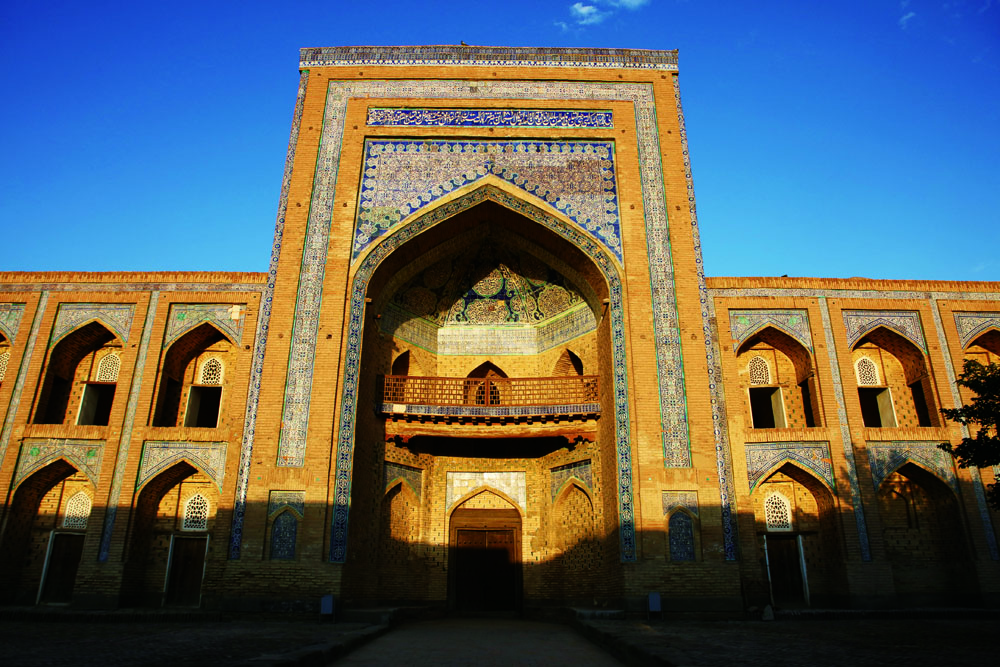
An ancient building in Khiva
The entire city is a cultural relic. Itchan Kala, the inner town, was inscribed in the UNESCO World Heritage Site list in the 1990s as the first of four such sites in Uzbekistan. However, due to disrepair, some ancient buildings sustained damage in varying degrees.
The Amir Tura Madrasah and the Hassan Murad Kushbegi Mosque were in the greatest danger. The madrasah was built in the 1740s. Only some partial repairs were undertaken in 1983, after more than 200 years. The cracks in its walls widened and the largest was nearly 30 centimeters. The southeast part of the wall tilted, sinking nearly 50 centimeters into the ground. The mosque was built in the late 18th century, and suffered serious damage to its floors, walls and wooden components.
With the passage of time, the buildings became bent and needed comprehensive and immediate repair. If the work was delayed, they were likely to be beyond repair. The restoration of the two buildings promised to be extremely challenging, requiring the highest technical expertise.
In order to protect the ancient city, the government of Uzbekistan decided to carry out restoration in 2014. At the request of the government, the Chinese Academy of Cultural Heritage sent a professional cultural relic restoration team to this important town on the Silk Road. The team took up residence in the city and carried out restoration together with the local people.
A Minimal Intervention Approach
Khiva resident Kasymov loves his city. At sunset, he likes to stand in front of the Amir Tura Madrasah, telling the children there stories of the city’s prosperity in the past.
Kasymov participated in the partial repair of the city in the 1980s and so had very good first-hand knowledge about its condition. When he got to know that a Chinese team was going to carry out restoration work, he applied to be their guide and was readily accepted by them as their new member.
The Amir Tura Madrasah
For the team, getting the right materials was the first key to the restoration.
Kasymov took the initiative to contact his friends to get cement and paint for the project and they readily offered a good price, seeing that it was such an important project. However, neither the cement nor the paint was bought. Instead, the team placed orders for traditional materials.
Kasymov was unhappy with the decision. He confronted Yan Ming, the Chinese engineer, asking him, “Why have you decided not to use new materials? I used them 30 years ago. Are you trying to save money?”
Despite Kasymov's aggressive question, Yan was very patient. “I think that you would like tourists to love the city as much as you do and feel its long history,” he said. “We cherish the cultural heritage like you do. Traditional materials will provide more authentic historical information to tourists and our future generations. If we use new materials they will accelerate the process no doubt but the result will be like an old man with a baby face. Would you be happy with that?”
Yan showed Kasymov a crack in the wall of the madrasah that had been filled with cement a few years ago. He scraped out the cement and closed the crack with traditional mortar in the traditional way. Then he asked Kasymov to compare the two methods and say which showed more harmony with the original structure.
Kasymov had his answer. “I’ll tell my friends to take back their cement and paint,” he said. “Hey you, you can’t take part in this sacred project,” he told a bag of cement lying on the ground, kicking it in mock admonition.
Later, Kasymov removed the cement he had used to fill the cracks and repaired them in the traditional way the Chinese engineer had shown him.
Technology was also critical to the restoration.
After careful study, the Chinese team decided to use their experience from the restoration of the Jiayu Pass on the Great Wall, one of the best known Chinese historical monuments.
They rearranged the bricks of the madrasah according to the width of the cracks in the dome and the walls and the degree of deformation of the joints between the bricks. Then they repaired the cracks bit by bit. It took them four months to finish this part of the project.
The restoration team treated not only the symptoms but also the root causes of the problems. The uneven foundation under the walls was repaired and reinforced to prevent further sinking and cracks. This was the minimal intervention approach in cultural relic restoration.
In addition, the Chinese team explained the main global methods of cultural heritage protection as well as the Chinese cultural relic protection technology to the local residents and workers. With the knowledge and practice, the local workers gradually mastered restoration technologies and were highly appreciative of the Chinese engineers’ minimal intervention concept.
In 2019, the reinforcement of the foundation and maintenance of the main building of the madrasah and the mosque was completed. Kasymov was delighted to see the madrasah standing upright again, with a retrofitted dome. He had never seen the mosque look so spick and span and majestic before. The earlier stark signs of repair had gone, thanks to the traditional style of repairing adopted. Kasymov was filled with pride to see the old city’s beauty and historical charm restored. “This is not a city in ruins any more,” a local resident said. “It is the Khiva in our hearts.”
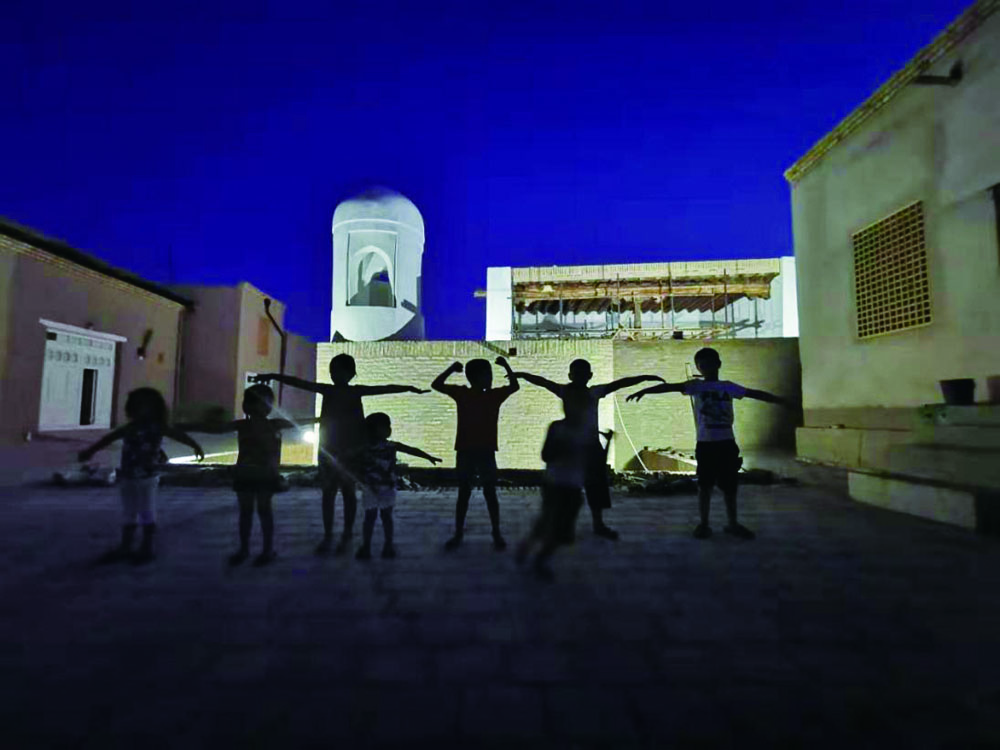
Children dancing in the Hassan Murad Kushbegi Mosque Square
With the restoration of the Amir Tura Madrasah and the Hassan Murad Kushbegi Mosque completed, the small square between the two buildings was also repaired and paved. Installing lights was the finishing touch to the whole project, a measure much anticipated by the local residents.
Learning that the lights were to be tested, the children in the neighborhood gathered in the square. When the lights were turned on, illuminating the madrasah and the mosque against the dark night sky, the children, excited by the novel view, began to dance in joy.
Young Blood Returns to Khiva
“I did not understand the significance of Khiva and the value of history,” said Mubarak, a young man from Khiva. “I had always lived in big cities and forgotten the long and brilliant history of our country. Today I love my country more because of Khiva. This is also a city where foreigners can understand our culture better. The restoration will help the city regain its vitality. I’m ready to contribute to its historical and cultural legacy.”
Khiva is Mubarak’s hometown. He left it to study in China and then chose to work in Uzbek capital Tashkent like his schoolmates. Life in the big city was good but when he heard the news that Chinese experts were restoring cultural relics in Khiva, it touched a chord in him.
He realized he wanted to do something for the development of his hometown and decided to give up his comfortable life in the capital to return to Khiva and work as an interpreter for the Chinese engineers. He wanted to be involved in some practical action.
Today, there are more and more people like Mubarak in Khiva. The restoration of the ancient city has helped them know a different city. Many have chosen to come back with pride not only because Khiva has been restored perfectly but also because they see a beautiful future for the ancient city.
Khiva’s heritage sites are mainly located along both sides of the east-west road corridor. In order to appreciate the cultural heritage such as the madrasah and mosque more comprehensively, it was necessary to build another road from the north gate. The restoration team paved the road and square with local stones and bricks in the traditional way, making it not only more convenient for the local residents, but also paving the way for the development of tourism.
The 26-hectare ancient city currently has more than 300 households with over 2,000 residents. Many of them took part in the restoration and have benefited from it.
Oleg is one of them. Since the restoration, his tourism business has been booming. Every day, he drives his shining car to neighboring Urgench city to bring foreign tourists from there to Khiva. When they stop at the madrasah and the mosque, he proudly tells them: “These buildings were restored with Chinese assistance. I participated in the project.”
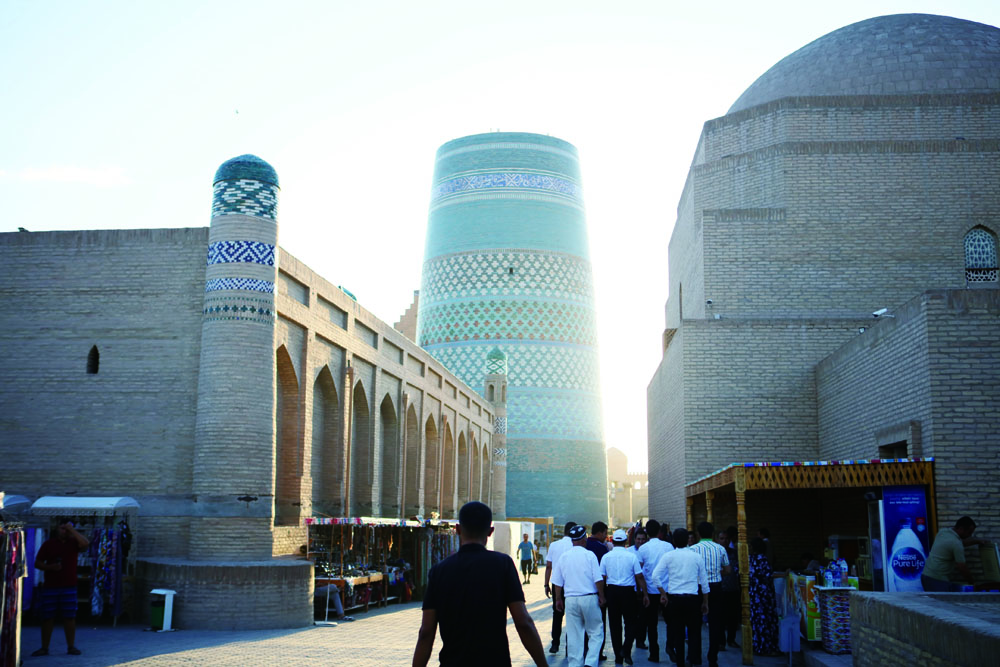
A street in Khiva
At sunset, the vendors in the streets of Khiva begin to tidy up their stalls, the handicrafts shops start closing as the city prepares for its tranquil rest at night. Tomorrow, more tourists will arrive at the city from all over the world, just like the camel caravans that flocked in from the other end of the globe a thousand years ago, bringing more business opportunities and hope.
FOR MORE
Project Overview
The Khiva city is known as the shining pearl on the ancient Silk Road. Inscribed in the UNESCO World Heritage Site list, the city has immense historical and cultural value, with well-preserved ancient structure and many representative cultural relics and monuments.
The cultural relic restoration project in the Khwarazm Region was undertaken by the Chinese Academy of Cultural Heritage. The project involved restoration of the Amir Tura Madrasah and the Hassan Murad Kushbegi Mosque in Khiva. The madrasah is representative of the Islamic architecture of old Uzbek states, the Khanate of Bukhara and the Khanate of Khiva in the 17th to 19th centuries. It has a total built-in area of about 3,000 square meters. The mosque, built in the late 18th century, is a typical example of the small mosques in the ancient city, and has a floor area of about 188 square meters.
The Chinese restoration team lived in this ancient city on the edge of the desert to carry out the restoration with the local people by exchanging ideas and training local talents, writing a new chapter in the story of China-Uzbekistan friendship.

